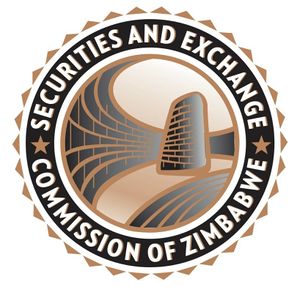Inflation remains within RBZ target
ZIMBABWE’S monthly inflation rate remained within the targeted range set by the Reserve Bank of Zimbabwe (RBZ) despite the marginal gain recorded this month.
According to the Zimbabwe National Statistics Agency (ZimStats), the ZiG Consumer Price Index (CPI), a critical measure of price changes, increased from 97,50 in July to 98,90 in August 2024.
This translated to a month-on-month inflation rate of 1,4 percent, reflecting a gain of 1,5 percentage points from the – 0,1 percent registered in July 2024.
This increase indicates a marginal rise in the cost of goods and services, echoing the impact of the policy measures to anchor inflation since April, when the country adopted a new currency.
ZimStats
“The month-on-month food and non-alcoholic beverages inflation rate was 2,2 percent in August 2024, gaining 2,9 percentage points on the July 2024 rate of – 0,7 percent.
“The August 2024 month-on-month non-food inflation rate was 1,1 percent, gaining 1,0 percentage points on the July 2024 rate of 0,1 percent,” ZimStats said.
Despite the slight uptick in inflation, these figures remain well within the expectations of the central bank and industry.
RBZ Governor, Dr John Mushayavanhu has expressed confidence in the prevailing relative price stability since the introduction of the Zimbabwean Gold (ZiG) currency on April 5, 2024.
However, a recent surge in the exchange rate has raised some concern about the potential impact on prices, pointing to the need to further tighten policy to curtail any underlying inflationary pressures.
In an interview with our Harare Bureau in June, the governor noted: “The inflation figures for May and June are testimony to the fact that the introduction of ZiG has resulted in price and exchange rate stability.
“We are not going into deflation and our monetary policy statement projects that ZiG inflation will end the year at between two percent and five percent, with the IMF projecting seven percent as per their recent statement.”
The central bank’s forecast aligns with projections by the International Monetary Fund (IMF), which has consistently emphasised the importance of maintaining inflation within single digits.
A similar outlook perspective is also shared by the Zimbabwe National Chamber of Commerce (ZNCC). “From a business perspective, an inflation rate of five percent month-on-month is something that we can work with.
“At our congress last week, we were in discussion with (the RBZ) and they said they are targeting around three percent to five percent, so we are in agreement and we all want the same,” ZNCC noted.
On a broader scale, ZimStats reported that the US dollar Consumer Price Index (CPI) was 106,65 in August, up from 106,48 in July, representing a year-on-year inflation rate of 3,7 percent.
This marks a 0,2 percent month-on-month inflation rate, a 0,3 percentage point gain from July’s – 0,1 percent rate.
“The USD month-on-month Food and Non-Alcoholic Beverages inflation rate was 0,5 percent in August 2024, gaining 0,6 percentage points on the July 2024 rate of -0,1 percent.
“The August 2024 month-on-month non-food inflation rate was 0,0 percent, gaining 0,1 percentage points on the July 2024 rate of -0,1 percent,” ZimStats said.
Similarly, the weighted CPI, a broader measure combining both ZiG and US dollar CPIs, rose to 99,44 in August from 99,03 in July. The weighted month-on-month inflation rate stood at 0,4 percent, a notable 0,5 percentage point increase from the previous month’s -0,1 percent. According to ZimStats,
“The month-on-month food and non-alcoholic beverages inflation rate was 1,0 percent, gaining 1,3 percentage points on the July 2024 rate of -0,3 percent. The August 2024 month-on-month non-food inflation rate was 0,1 percent, gaining 0,2 percentage points on the July 2024 rate of – 0,1 percent.”
Data collection for these statistics was conducted from August 8-16, 2024, indicating that the price changes reflect the economic activities within that specific period. With inflation currently within the targeted range, there is a sense of stability, even as authorities remain vigilant to potential external and domestic pressures that could alter the inflationary trajectory.chroncile











